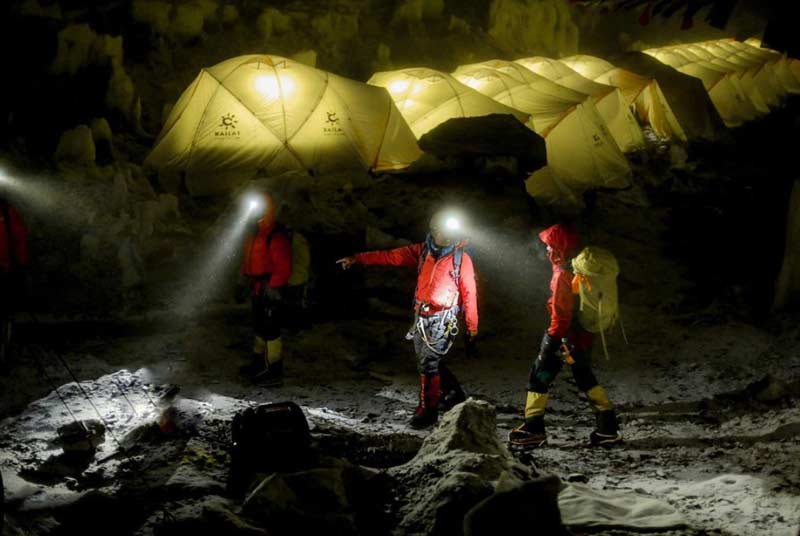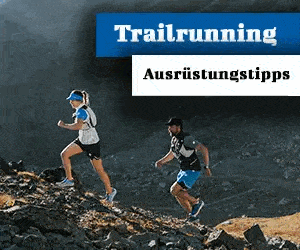So far, the K2 was considered too demanding and dangerous to be approached on a large scale by commercial providers. That seems to be changing now. Around 50 climbers stood on the summit in July, including many paying customers. It seems as if the «wild mountain» has been tamed - tourism has also arrived at K2.
A total of 48 people stood on the in July K2, of which only 3 without artificial oxygen - a successful year from the point of view of commercial providers, which was only slowed down by Covid. Perhaps it would have been a record year without the pandemic (there were 2018 ascents in 62).
That would have been inconceivable 15 to 20 years ago.
Ralf Dujmovits
“That would have been inconceivable 15 to 20 years ago,” said Ralf Dujmovits, who was the first German to stand on all fourteen eight-thousanders, on social media. Although the K2 has been the destination of commercial expeditions since the mid-1990s, it used to be small teams with few customers.
The route over the Abbruzzisporn is consistently steep, exposed and exposed to objective dangers. The platforms for erecting tents are rare, only on the so-called shoulder at 8000 meters does the K2 briefly cover itself. This is followed by the steep bottleneck: a gully that has to be passed quickly because the climbers are under an ice break. While Everest was increasingly becoming a status symbol for sale, the image of the K2 has remained unchanged until now: prestigious, a mountaineering challenge.
A climber takes a break in the ascent on K2.
"Compared to Mount Everest, the K2 has so far been considered too difficult for large commercial expeditions, but above all too dangerous," says the expert Stephen Nestlerwho has followed high altitude mountaineering for over 20 years. “In the meantime, however, all the concerns of the organizers seem to have evaporated.
Some of them, especially from Nepal, proceed according to the motto: There is nothing that we cannot make possible. ”A fatalistic attitude also plays a role, in the sense that the customers themselves should know what they are getting into. That became clear last winter when the largest Nepalese supplier (Seven sum with treks) even announced the winter ascent of K2.
In the meantime, however, all the concerns of the organizers seem to have evaporated. Some of them, especially from Nepal, operate according to the motto: There is nothing that we cannot make possible.
Stephen Nestler
Anyone could click “book now” on the Internet and book the tour - at a time when the winter ascent of K2 was never done. A customer and a mountain guide perished during the expedition. Others made it to high camp 3, where there was a lack of space, resources and coordination. Squeezed into overcrowded tents, they escaped freezing. After that, SST was hardly criticized. Rather, the chaos in the hymn of praise about the first winter ascent by the ten Nepalese was forgotten.

“Only those who risk enough will find out how far they can go.” - Seven Summit Treks
When asked whether the success of the first winter ascent on K2 will also affect future summer tourism, Ralf Dujmovits answers. "Some will think: if you can now climb the K2 in winter, it should also be possible for me as a hobby mountaineer in summer." Including internet in the base camp in order to be able to present yourself accordingly in the social networks. "
Not a tourist mountain
The American expert Alan Arnette, who himself has already stood on the K2, considers it unlikely that K2 will be besieged by tourism to the same extent as Everest. “During a good season we only see 50 ascent of K2. In contrast, there are 500 on Everest in a normal season, ”he writes on his blog. A difference by a factor of 10, which he believes will continue to exist. Because the requirements of the K2 are not a tourist mountain and never will be.
Arnette, for example, emphasizes the descent, which the mountaineers often have to master independently under great exhaustion with zero tolerance for mistakes: “Most of the time, you have to abseil, and you will find a chaos of old ropes. If you choose the wrong rope, it can break under the weight. One is exhausted, there is a lack of concentration, mistakes happen easily. "
That is a huge difference to Mount Everest, for example, where the descent is easier and more harmless just because of the moderate steepness and can be better assisted by Sherpas and mountain guides. To date, over 10 people have stood on Mount Everest. Every year criticism of the rampant tourism grows when pictures of piles of rubbish or entire columns of mountain climbers make the rounds.
Nepal has been announcing for years that it will regulate Everest tourism better - but the motto is looking the other way. The Nepalese Ministry of Tourism enacted a law in the spring that is supposed to forbid the dissemination of images showing corpses, crowds or natural hazards on Everest. It is ridiculed as unenforceable, as censorship of reality there is something to think about.
The Nepalese Ministry of Tourism enacted a law in the spring that is supposed to forbid the dissemination of images showing corpses, crowds or natural hazards on Everest.
Everest has lost its nimbus
"Everest has almost lost the aura of the extraordinary," says Stefan Nestler. Could the K2 one day even overtake Everest and become the more popular eight-thousander? “That much is certain. If you want to polish up your ego and shine in front of friends and acquaintances with an eight-thousander heroic deed, you can now achieve this more with a K2 than an Everest ascent. Simply because the task is more demanding and, above all, more dangerous. "
Every year it proves that the K2 is dangerous. Last winter there were five fatalities, this summer the British mountaineering legend Rick Allen died in an avalanche. 2008 was the deadliest season so far, with 11 dead in just two days. Paradoxically, however, tragedies on the high mountains hardly have a deterrent effect; they seem to increase the fascination. After eight people died within one night on Everest 1996, tourism there by no means lost - on the contrary
The drama was processed in the bestseller by John Krakauer, flickered on the screens of Imax cinemas worldwide and brought Everest into the minds of a wide audience. The fact that the summit contenders on the southern route passed the two frozen mountain guides Rob Hall and Scott Fischer by 2010 was part of the fascination of Everest.
That might interest you
- Declared dead on K2: John Snorri, Juan Pablo Mohr and Muhammad Ali Sadpara
- Speed records in alpinism: why, why, why?
- This rope is cut-resistant than all others: the Edelrid Swift Protect Pro Dry
+ + +
Credits: Cover picture Lakpa Dendi Sherpa


